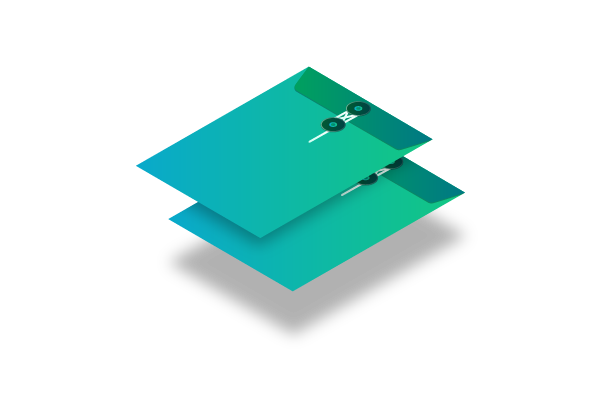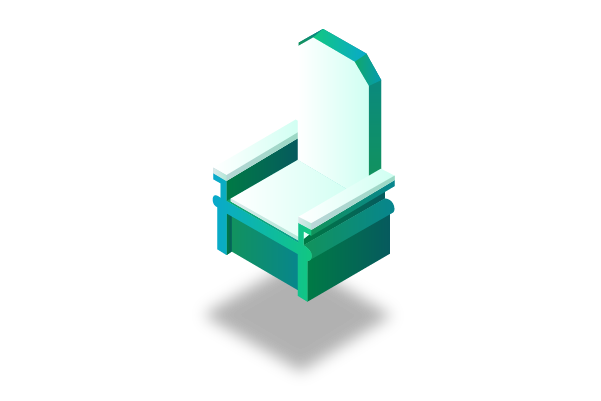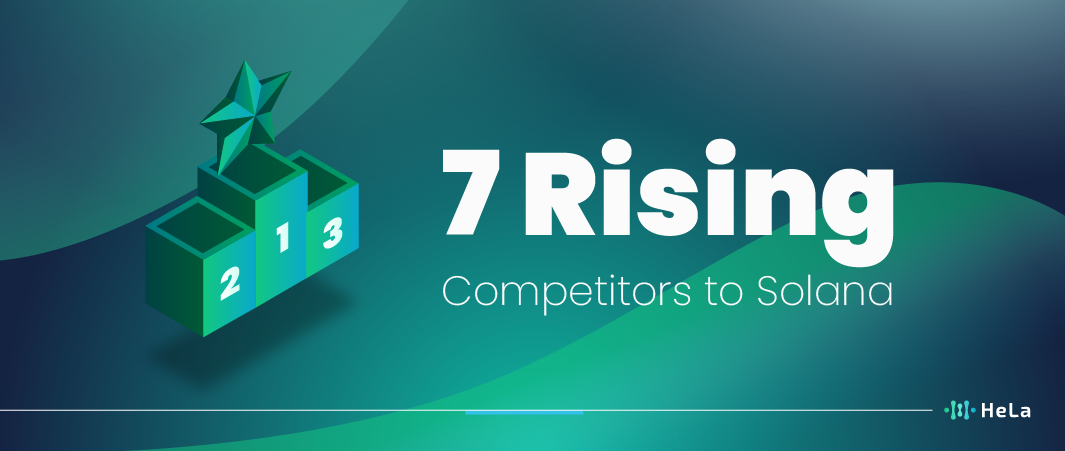Termed as the “Solana Killer,” these new blockchains are vying for the top spot, aiming to overcome the limitations of their predecessors and promising a brighter decentralized future. In this article, we venture into the heart of these new platforms, highlighting the top 7 contenders who have the potential to rival, Solana Killers.
The blockchain universe never ceases to evolve. Every year, a new star rises, challenging established norms and presenting innovations that redefine the landscape. In 2019, Ethereum’s dominance was first questioned by competitors like Tron and EOS. Fast forward to today, Solana has emerged as a frontrunner in scalability and efficiency.
Amidst the vast ocean of cryptocurrencies, it’s easy to get lost in the myriad of options and choices. While some projects fizzle out, others rise with monumental force. As we approach the dawn of a new crypto era, let’s explore these so-called “Solana Killers” of 2023.
Exploring Solana in Depth

Solana is a high-performance, open-source blockchain platform designed to support decentralized applications and cryptocurrencies. It stands out in the blockchain space due to its focus on scalability, speed, and cost-effectiveness. Unlike some other blockchains, Solana utilizes a unique consensus mechanism known as Proof of History (PoH) in combination with the widely adopted Proof of Stake (PoS) algorithm.
PoH helps in organizing and timestamping transactions efficiently, allowing Solana to process a vast number of transactions in parallel, thus achieving impressive scalability and low transaction costs. This unique approach has made Solana an attractive choice for developers looking to create scalable and efficient decentralized applications and services.
Developers building on Solana can utilize its native programming language, Rust, and the Solana Software Development Kit (SDK). These tools provide a robust environment for creating decentralized applications and services. Additionally, Solana’s ecosystem is characterized by its commitment to innovation, with a growing number of projects, decentralized finance (DeFi) protocols, and non-fungible token (NFT) marketplaces emerging on the platform. This diverse ecosystem provides users with numerous opportunities to explore and invest in projects that leverage Solana’s capabilities.
Furthermore, Solana’s commitment to fast transaction processing has led to a range of use cases beyond DeFi and NFTs. From gaming to decentralized identity solutions, Solana’s architecture has the potential to transform various industries. By providing a solid foundation for blockchain-based applications, Solana has earned a reputation for being a powerful and scalable platform, making it a significant player in the blockchain space worth exploring in depth.
7 Top Solana Killers to Watch in 2023

Solana, renowned for its exceptional transaction speed and scalability, has been a high-performance blockchain platform. Nevertheless, the blockchain landscape has undergone substantial evolution since its emergence. Several other blockchain platforms have arisen as formidable competitors to Solana, introducing a range of innovative features and enhancements. In this discussion, we will delve into seven prominent Solana killers to watch in 2023.
1. HeLa Labs
Hela Labs of Web 3.0 is all about giving people control over their digital stuff and data, and they’re doing this through a nifty decentralized identity system that makes transactions super trustworthy and secure. They’re really putting users first and making the whole digital world more personalized, plus they’re all about making you feel like you own your stuff in the blockchain universe.
What sets Hela apart from the competition, like the Solana killer, Sola, is their top-notch privacy protections, which strike a balance between staying private and playing by the rules. As a Layer 1 blockchain, Hela is all set to shake things up in industries like finance and supply chain management, totally changing how things work in the Web 3.0 world.
Key Features:
- Innovative decentralized identity management system
- Robust privacy safeguards that comply with regulations
- Hela Chain incorporates a built-in stablecoin within its ecosystem
- Potential to revolutionize finance and supply chain management
2. Aptos
Aptos, often referred to as the “Solana killer,” made its mark with its Layer 1 blockchain powered by the Move programming language, and it’s been generating quite the buzz. The cryptocurrency, born on October 12, 2022, and with its mainnet “Aptos Autumn” launching on October 17, 2022, has garnered substantial investments. Built on a Rust-based programming language called Move, Aptos stands out with a parallel execution engine and its commitment to security and affordability.
What sets Aptos apart from the crowd are its roots in the now-abandoned Diem blockchain initiative, previously backed by Meta, and its aim to uphold Diem’s original vision of creating a fast and scalable blockchain while enhancing user accessibility.
Key Features:
- Parallel execution engine for enhanced scalability.
- Robust security measures to ensure reliability.
- Low transaction costs, making it cost-effective for users.
- Legacy from the Diem blockchain initiative, ensuring a strong foundation for innovation.
Also Read: Top 14 Ethereum Competitors and Alternatives in 2023
3. Near
Near Protocol is a groundbreaking blockchain network operating at layer 1, offering a versatile platform for developers to build decentralized applications (dapps). Unlike Ethereum, Near Protocol, often dubbed the “Solana killer,” boasts remarkable speed and cost-effectiveness. It’s expected to outperform some major competitors and is projected to process a whopping 100,000 transactions per second (TPS) once fully deployed.
Key Features:
- Fast transaction processing
- Lower transaction costs
- Robust developer ecosystem
- Scalability and high TPS capacity
4. Avalanche
Launched in 2020, Avalanche was designed to be the ultimate blockchain platform, often dubbed as the “Solana killer,” aiming for speed, versatility, security, affordability, and accessibility. Its native token, AVAX, serves various purposes, such as covering transaction fees, securing the Avalanche network, and acting as the basic unit of account for Avalanche blockchains. This open-source project empowers anyone to view and contribute to its code, fostering a collaborative environment.
Key Features:
- Near-instant transaction completion
- A remarkable processing capacity of 4,500 transactions per second
- Outstanding security measures
- Open accessibility for a wide community of developers and users.
5. Shardeum
Shardeum is like a “Solana killer,” but with a twist – it’s an EVM-based smart contract platform designed for both speed and security. What sets Shardeum apart is its dynamic state sharding, which allows it to boost transaction processing speed as more validators join the network, ensuring consistently low gas fees. Unlike other state sharded blockchains that face hurdles with atomic composability, Shardeum stands out with its unique architecture that maintains seamless atomic composability across shards.
Key Features:
- Linear scalability: Shardeum can scale its transactions per second (TPS) by adding more validators while keeping gas fees low.
- Atomic composability: Unlike other state sharded platforms, Shardeum ensures that smart contracts can interact seamlessly across different shards.
- True decentralization: Shardeum maintains a high level of network decentralization, offering a secure and reliable ecosystem.
- High throughput: Shardeum boasts the highest throughput capacity among EVM-based Layer 1 blockchains, making it a formidable contender in the blockchain space.
6. Polkadot
Polkadot is like a dual-purpose superstar in the world of cryptocurrencies; it’s both a token and a clever decentralized protocol that you can trade on platforms like Coinbase or Binance. This protocol has an incredible superpower – it lets completely different blockchains chat with each other safely. For example, it can make Ethereum and Bitcoin talk without needing someone in the middle. What’s even cooler is that Polkadot aims to be lightning-fast and able to handle a ton of stuff, thanks to its use of a bunch of parallel blockchains, which helps share the workload.
Key Features:
- Interoperability: Polkadot is like a bridge between different blockchains, allowing them to communicate and share data or value directly.
- Scalability: Its use of multiple parallel blockchains helps Polkadot handle a high volume of transactions without slowing down.
- Decentralization: Polkadot is designed to be a decentralized network, reducing the need for central intermediaries and enhancing security.
- Solana Killer: Some even call Polkadot a “Solana killer,” hinting at its potential to compete with other blockchain platforms like Solana.
7. BNB Chain
In a remarkable move back in February 2022, Binance shook up the cryptocurrency world by uniting its Binance Smart Chain and Binance Chain into the revolutionary BNB Chain ecosystem, often dubbed as the “Solana killer.” This community-powered, open-source, and decentralized network boasts a dynamic fusion of strengths. Notably, it retains compatibility with Ethereum Virtual Machine, features innovative consensus mechanisms, and has rapidly evolved into a versatile multi-chain hub. BNB Chain stands tall as one of the world’s most significant cryptocurrency ecosystems, with its native token, BNB, securely holding the third position and boasting a market cap of a staggering $40.9 billion, excluding stablecoins.
Key Features:
- Ethereum Compatibility: Seamlessly works with Ethereum applications.
- Unique Consensus Mechanisms: Implements cutting-edge consensus systems.
- Multi-Chain Hub: Serves as a central hub connecting multiple blockchains.
- Unmatched Market Cap: Ranks third in the cryptocurrency world, demonstrating its substantial influence in the digital asset space.
Challenges Confronting Solana Killers

Creating a “Solana Killer” platform comes with significant challenges on multiple fronts. To start, the competition faces a daunting task of building a reputation to match Solana’s. Solana has already established itself as a reliable and efficient platform, making it a trusted choice for users. Gaining people’s confidence and surpassing Solana’s reputation will be a formidable endeavor for any aspiring “Solana Killer.”
On the technical side, there are substantial hurdles to clear. Achieving the blazing speed and scalability that Solana offers while maintaining robust security is no small feat. Additionally, these potential Solana killers must put in the effort to foster a thriving ecosystem. This involves providing developers with the necessary tools, resources, and incentives to attract projects and encourage the migration or adoption of various digital assets, including stablecoins.
Furthermore, navigating the ever-evolving regulatory landscape poses a significant challenge. The “Solana Killer” platform not only needs to adapt to shifting regulations but also anticipate potential changes. Ensuring compliance and establishing a robust defense against possible legal challenges is crucial in this constantly changing environment.
Aspiring “Solana Killer” platforms face the uphill battle of building trust and reputation, overcoming technical hurdles, nurturing a thriving ecosystem, and staying ahead of regulatory changes to emerge as a serious contender in the blockchain space.
Also Read: Top 10 Solana Competitors and Alternatives You Shouldn’t Miss
Opportunities for Solana Killer
In the world of blockchain, the race for a Solana killer is on, with ample opportunities waiting for the platform that can truly outshine Solana. One of the most promising prospects lies in tapping into the vast, untapped market. With blockchain technology rapidly infiltrating mainstream industries, there’s a veritable gold rush for platforms that can efficiently cater to these emerging sectors. A Solana killer has the chance to make its mark in this competitive landscape.
Another key opportunity for a Solana killer is in bridging the blockchain divide. A platform that seamlessly integrates with other blockchains, enabling cross-chain collaborations, will undoubtedly gain a distinct advantage in the market. This ability to foster interoperability could be a game-changer and set a Solana killer apart from the rest.
Furthermore, the ongoing concerns surrounding the environmental impact of blockchain operations provide a unique window of opportunity. Platforms that prioritize green technologies and sustainable practices are likely to resonate with the increasingly eco-conscious crypto community. A Solana killer that addresses these environmental concerns could find favor and carve out a significant niche in the blockchain ecosystem.
Conclusion
The world of blockchain technology is in a constant state of flux, with new projects emerging and older ones evolving to meet the ever-changing demands of the industry. As Solana enjoys its time in the limelight, it’s evident that the space isn’t short of worthy adversaries. Each “Solana Killer” on this list brings its own set of innovations and solutions, aiming to push the boundaries of what’s possible in the crypto realm.
While it’s yet to be seen if any of these platforms will indeed dethrone Solana, what’s undeniable is the progress they represent. The crypto community can only benefit from such healthy competition, as it drives innovation, brings forth new solutions, and ensures that the end user always has the best tools at their disposal.
As we forge ahead into 2023, it’s an exciting time to be a part of this dynamic ecosystem. With such promising projects on the horizon, the future of decentralized technology looks brighter than ever. Whether Solana remains the king or a new contender takes the throne, one thing’s for sure – the blockchain revolution is in full swing, and there’s no stopping it now.
Disclaimer: The information provided by HeLa Labs in this article is intended for general informational purposes and does not reflect the company’s opinion. It is not intended as investment advice or recommendations. Readers are strongly advised to conduct their own thorough research and consult with a qualified financial advisor before making any financial decisions.

Hi, I'm Carina, and I've been captivated by the world of web3 for as long as I can remember. Ever since I first dipped my toes into this innovative technology, I've found myself drawn to exploring and understanding its infinite potential. The complexities of layer 1 solutions particularly intrigue me, as they form the foundation of decentralized networks and pave the way for a more transparent and efficient digital landscape.
-
Carina Caringalhttps://helalabs.com/blog/author/carina-caringal/
-
Carina Caringalhttps://helalabs.com/blog/author/carina-caringal/
-
Carina Caringalhttps://helalabs.com/blog/author/carina-caringal/
-
Carina Caringalhttps://helalabs.com/blog/author/carina-caringal/

